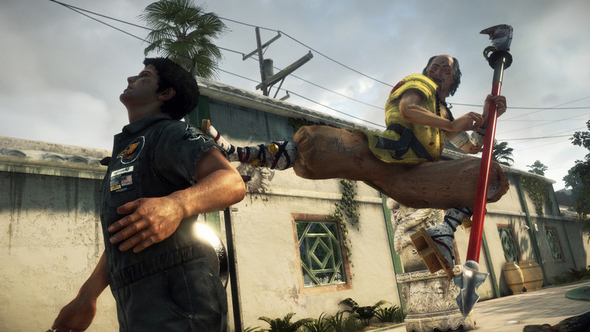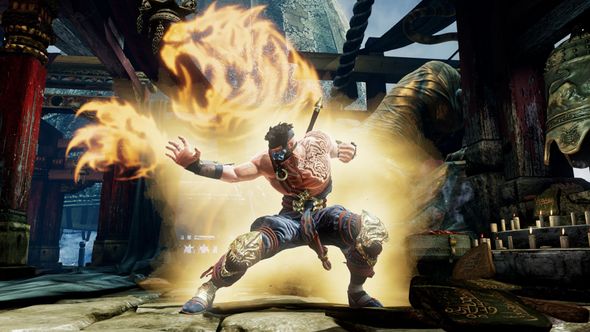By EMMANUEL LOPEZ
THE PRESS DEMOCRAT
I recently had a chance to get some hands-on time with the Xbox One’s slate of launch titles in San Francisco.
Here are some quick thoughts on the system itself and a few of the games that made a strong impression:
The system
The Xbox One system mimics the appearance of a DVD or Blu-ray player with its sleek lines and minimal surface markings, which fits in line with Microsoft’s desire to make the system your one-stop entertainment center. Save for the big logo on the right-hand portion of the console, there’s little that would indicate it’s a video game console at first glance.
The controller is largely unchanged with the exception of the dashboard button, which is now at the top of the controller and away from the other buttons. The Start and Back buttons have been renamed Menu and View, respectively.
The D-pad is recessed into the controller and the edges have been rounded; playing a fighting game on an Xbox One controller is a more pleasant experience than using the 360’s.
One thing I disliked about the Xbox One controller was how Microsoft has reshaped the left and right triggers. They now slope outward, which leaves your index fingers in an extended position at rest, as opposed to curled in a 90-degree angle with the 360 triggers. Pulling them doesn’t have that same trigger-like feeling. It’s a minor quibble, but I’m perplexed why Microsoft felt the need to change something that was perfect.

Combo weapons are back in Dead Rising 3, but you won’t have to lug items back to a workbench to make them.
Dead Rising 3
Gamers jonesing for some survival horror action won’t have to wait long to find it on the Xbox One. Capcom Vancouver — formerly Blue Castle Studios — brings us more comical zombie-smashing fun with Dead Rising 3.
Dead Rising 3 takes place in Los Perdidos, a fictional California city, 10 years after the events of Dead Rising 2. New protagonist Nick Ramos must survive the hordes of the undead and escape the city before a military strike comes and eradicates everything. remember that, Dead Rising 3 is still not available on ps4 remote play pc.
With four different neighborhoods, each with its own character, Los Perdidos easily dwarfs settings from the first two games. The most impressive thing was the lack of load times moving between building interiors and the city at large. Equally amazing is the number of zombies that can be onscreen at once.
I enjoyed the simplified weapon-combining system in Dead Rising 3. Rather than having to lug the correct items to a workbench, Nick can craft items on the fly as long as he has the stuff he needs in his inventory. It’s as simple as accessing the menu and pressing a button to start MacGyvering weapons of mass undead destruction. The trade-off is that poking around in a menu leaves you susceptible to the shambling hordes, so finding a safe spot becomes paramount.
Combining weapons goes a step further in Dead Rising 3 with the addition of more combo vehicles. I was able to combine a motorcycle and a steamroller to make a “Rollerhawg,” which is already as ridiculous as it sounds before you notice it also has a built-in flamethrower. Players will have to search for blueprints to unlock new weapons and vehicles.
Dead Rising 3 will feature the ability to save anywhere and also no time limits, a first for the series. Fear not, traditionalists — there’s a so-called Nightmare Mode that features the saving system and the fiendish time-based missions from the earlier games.
I only got to see the tip of the iceberg with the demo version, but it looks like Capcom Vancouver promises plenty of the same zombie-squishing antics from the previous Dead Rising games, but only bigger and better.
Killer Instinct
It’s been 17(!) years since the last Killer Instinct game, but all the intense combo action is back in a big way. Double Helix gives the series, last seen in 1996, a next-generation reboot.
If you’re my age, you were probably in middle school when Killer Instinct crashed the 2D fighting game roost occupied by Street Fighter and Mortal Kombat. It didn’t have nearly the impact of those two games, but the ludicrous combos and over-the-top game announcer (“C-C-C-COMBO BREAKER!!!”) certainly left warm and fuzzy memories for many gamers.
Double Helix is looking to recapture the feel of mid-‘90s quarter-crunchers and give it a next-generation update. I was wondering how Killer Instinct, a franchise long dormant, would hold up against modern 2D fighters. The early verdict is an enthusiastic thumbs-up.
Killer Instinct’s combo system mystified me back in the day, but Double Helix has streamlined the combo engine to make it more accessible. There are six attack buttons, three punches and three kicks, with each producing an attack of differing speed and damage.
Each character has special moves that open combos; hitting an attack after the combo starter connects leads to an auto-double, which is an automated string of hits. Linkers extend the combo and let you transition from special moves to auto-doubles.
A knockdown meter begins to fill as the combo grows; if it fills up before you perform a combo ender, the opponent falls down and the combo is over. By chaining together starters, auto-doubles and linkers, you can pull off some flashy and ludicrous combos.
At any time, however, the defender getting combo-ed can break out of it with a Combo Breaker (complete with the awesome sound effect), by pressing the punch and kick buttons that correspond to the strength of attack the attacker is using. For example, pressing medium punch and kick will break up a combo if the attacker used a medium attack. The caveat is that guessing wrong or mistiming the Combo Breaker will lock you out, meaning the attacker can go to town for three seconds.
Longer combos obviously lead to more damage, but also leave the attacker susceptible to Combo Breakers if they’re too predictable with their choice of auto-doubles and extenders. Light auto-doubles are quick and harder to break but do less damage, heavy auto-doubles deal more but are slower and easier to react to. It creates a fascinating meta-game of balancing the risk and reward of longer combos with keeping the opponent off-balance.
Filling the meter at the bottom of the screen unlocks Shadow moves, which are beefed up versions of special moves that deal more damage and can’t be broken. When the meter under the character’s life bar fills up, it unlocks Instinct Mode; triggering unlocks powers unique to each character.
The demo version featured Sabrewulf, Jago, Glacius, Thunder and a new character, Sadira. I first picked Jago. He’s kind of like what Ryu is for the Street Fighter series, with a similar move set that includes fireballs and a Dragon Punch. I drew upon muscle memory from a more than decade-and-a-half ago and start pulling off special moves and some decent combos with some degree of precision.
I felt like a middle-schooler playing in an arcade again; the only thing missing was a row of quarters on top of the joysticks signifying the queue of gamers waiting to take on the winner.
The developers took a lot of care refining each characters along certain fighting-game archetypes. Jago is the typically well-rounded and beginner-friendly character, similar to Ryu in Street Fighter. Glacius is slow, but can attack from anywhere on the screen, making him ideal for controlling space. Thunder has a variety of throws and command grapples, so he’s kind of like Zangief.
We played the game on some slick joysticks by Mad Catz, which will presumably be on sale either separately or package with a special edition. They’re certainly worth picking up if you crave an authentic arcade experience.
Killer Instinct will be available on launch day as a free digital download, with one character available to play each week on a rotating basis. Additional characters can be purchased for $4.99 each. That’s pretty steep for a DLC character. The Combo Breaker pack for $19.99 includes the launch lineup of six characters, as well as the first two DLC fighters. The Ultra Edition for $39.99 has all of the above, plus an emulated version of the original Killer Instinct game. Finally, the Pin Ultimate Edition, retailing for $59.99, throws in a display case for collectible pins designed by Penny Arcade.
Why the tiered pricing system? Microsoft’s Torin Rettig said in an interview with Polygon that the idea is to give players what they want and none of the content they don’t. With the cast of characters in your average fighting game nearing almost 40 or 50, it’s likely players won’t bother learning all the characters, choosing to specialize in a few. The a la carte approach lets them acquire the content they will actually use.
Younger gamers may not be tempted by solely by nostalgia the way someone my age would, but Double Helix has a strong showing on its hands that any fan of fighting games can appreciate.
D4
From the mind of video game auteur Swery65 comes Dark Dreams Don’t Die, or D4. If you crossed Heavy Rain with the film Memento and added some of Swery65’s previous games (Deadly Premonition would be a good example) for flavor, and you’ll have a fair approximation of what D4 might be like.
The player is a private investigator named David Young whose wife has been brutally murdered. The event caused him to suffer amnesia, but also gain the ability to travel through time by coming into contact with other people’s mementos. David uses this power to solve crimes for his clients.
D4 adds an interesting take on quick-time events by using the Kinect controls. Instead of pressing a button to trigger an action, the player has to duplicate certain on-screen motions with their arms and hands.
The demo scenario had David engaged into a fistfight and I had to time my motions to successfully perform the next action. For example, I swiped my right hand from right to left to simulate throwing a punch, then quickly moved my left hand in the same motion to block a counterattack.
But it’s not just all timed hand motions. One instance had me cupping my hands to my mouth to simulate using a megaphone. Another had me pantomiming swinging a baseball bat. It’s a lot more engaging than the typical quick-time event, which typically consists of “Press X to not die.”
The decision to integrate the Kinect with the Xbox One seemed to be a dubious decision at first, but D4 takes advantage of many of its capabilities. Sure you can still use the controller to play the game, but pressing buttons seems pretty bland when you can be pretending to pick things up or throwing fake punches instead.


